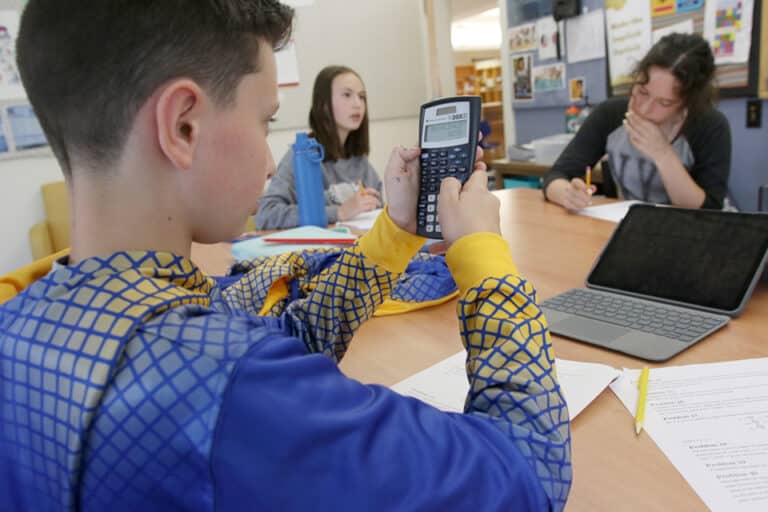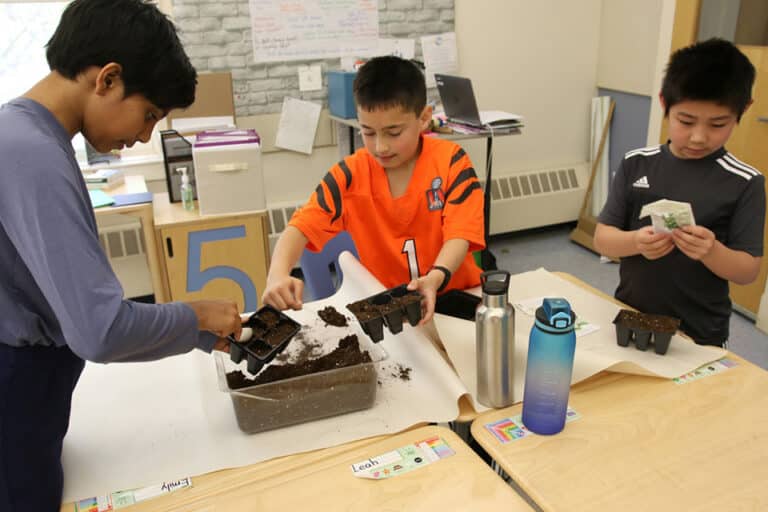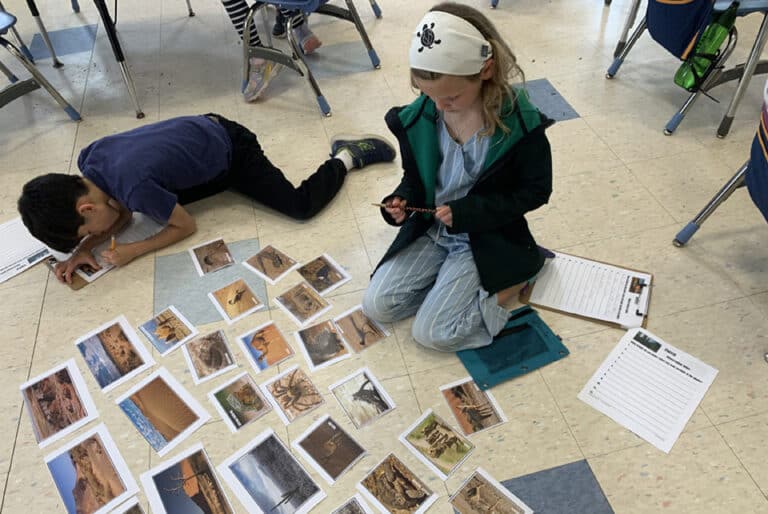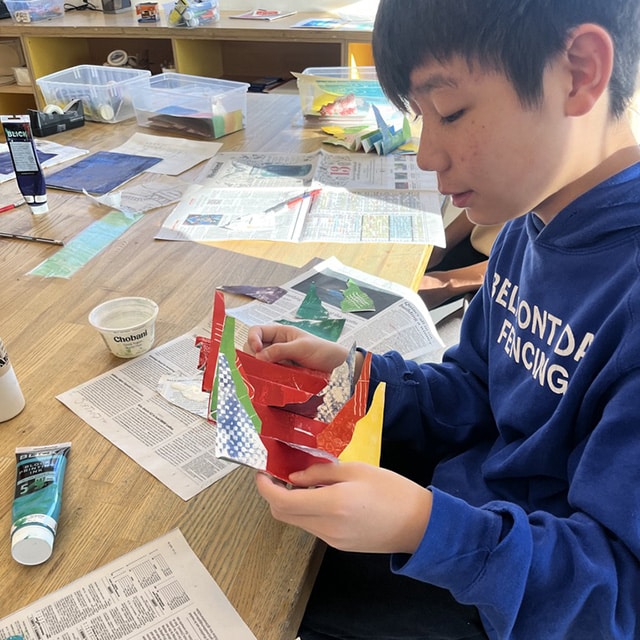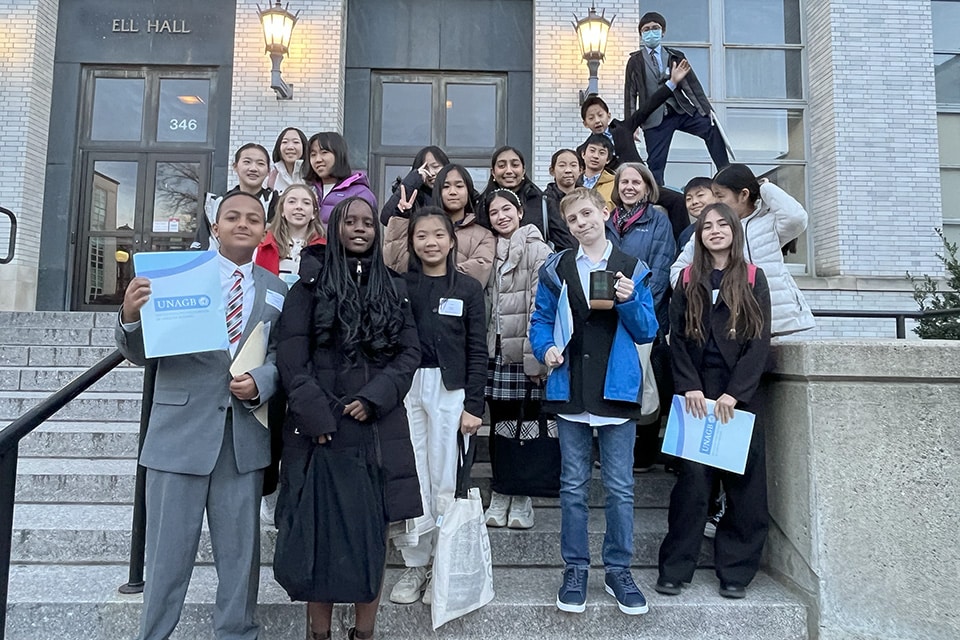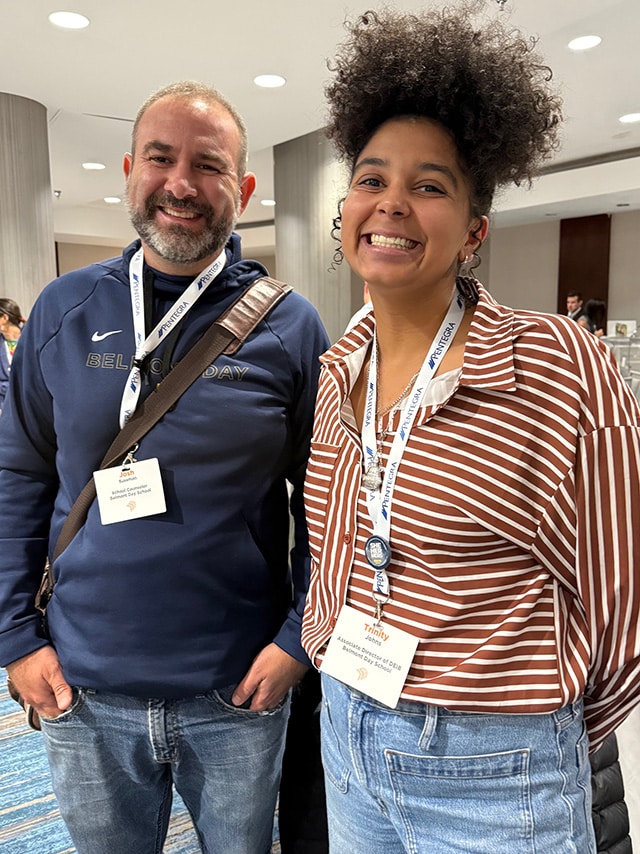Middle School Students Excel at Math Competition
This is the second year that Belmont Day middle school students have participated in the “Purple Comet! Math Meet”. The Purple Comet! Math Meet is a free, team-based, international mathematics competition for middle and high school students. In 2022, more than 12,000 students competed on over 3,998 teams from 62 countries! At the middle school level, teams of five or six students compete by working together to solve 20 math problems in 60 minutes. The problems range in difficulty from fairly easy to extremely challenging. This year at BDS, we had seven teams of sixth and seventh graders voluntarily participate! Teams used tools such as whiteboards, spreadsheets, rulers, and calculators–along with their own incredible mathematical creativity and teamwork–to think about and work through new and exciting mathematical problems! The BDS math department and other faculty who helped to supervise the competition were thrilled to see students choosing to challenge themselves, and collaborating so effectively.
– Sarah Pikcilingis, middle school math teacher
Fourth Graders Plant Seeds to Grow New Knowledge
Fourth graders have begun their plant unit. Students have conducted research on what helps seeds germinate, under what conditions seedlings best grow, and why seedlings sometimes don’t make it. As they begin their plant-growing experiments, they will collect data on how they manage their plants and how different variables affect the plants’ outcomes. Fourth graders will also be learning about plant anatomy, reproduction, and photosynthesis.
– Emily Crawford, fourth grade teacher
Second Graders Study Habitats and Animal Survival
Our second grade scientists have begun one of our cornerstone projects: studying habitats and researching endangered species. We began by discussing habitats and thinking about what each habitat needs for an animal to survive. We looked at images of deserts, oceans, forests, wetlands, polar regions, rainforests, and grasslands. Students had to categorize many pictures of habitats and then decide which animals lived in certain habitats. Working with a partner, students then made observations about these habitats and the animals that live there. For example, students noticed that many animals who live in polar regions have thick, white fur and that every habitat has a combination of predators and prey. We then discussed the concept of how animals adapt in many ways to survive in different habitats. Next, students will be learning about what happens when habitats and the animals in them become endangered.
– The Second Grade Team
